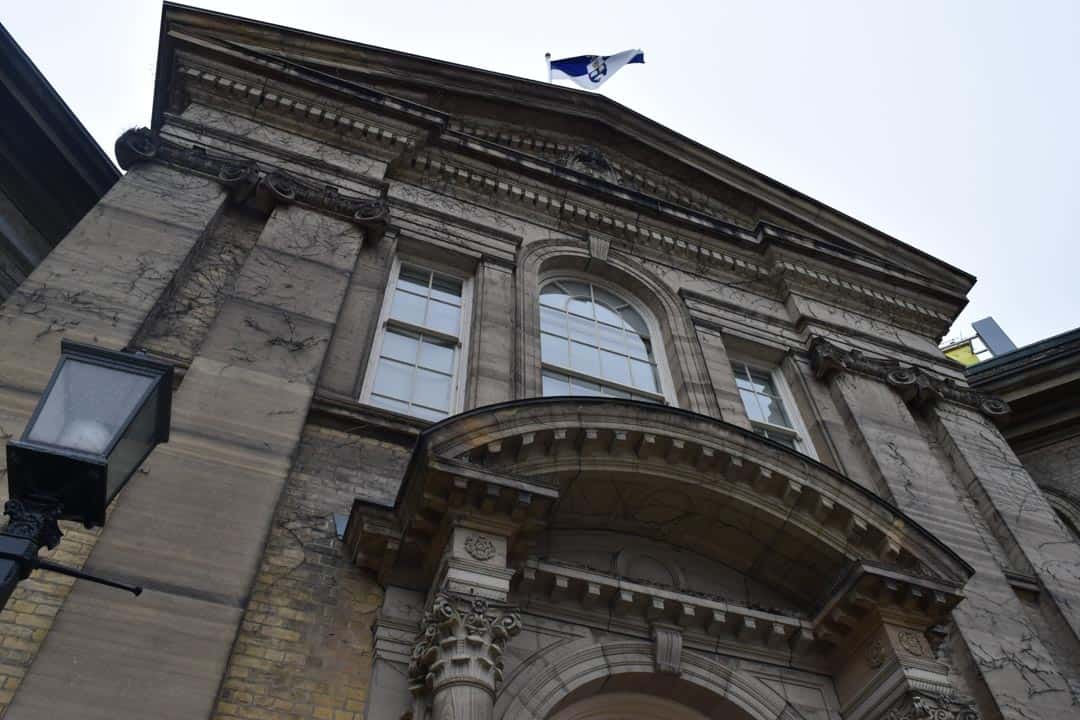On September 17, the Planning and Budget Committee (PBC) of U of T’s Governing Council voted to recommend the advancement of six capital projects, including the 23-storey Spadina-Sussex residence and the installation of geothermal systems at King’s College Circle and Robert Street Field.
The PBC is responsible for providing the first stage of recommendations for these projects, which have been budgeted at over $5 million each. While the governance path for each of the six projects varies, three will be voted on for final confirmation by the Executive Committee on October 15, while the other three will need final approval from Governing Council on October 24. The distribution of project costs and funding sources of all six projects were discussed in camera.
Spadina-Sussex residence
The planned Spadina-Sussex residence site will provide 511 beds in both dorm rooms and apartment suites, as well as a dining hall and amenity spaces. Fifteen per cent of these dorm rooms will offer barrier-free access, and the residence will target a mix of first-year and upper-year undergraduate students. Ten stacked townhouses will be allocated to faculty members and their families.
The dining hall will be open to all U of T students. The report notes that the “West campus has been identified as being underserved with respect to Food Services, especially given some of the demand for food availability in the vicinity of Robarts Library.”
Six residential units, currently located at 698 and 700 Spadina Avenue, will be demolished to make space for the 19,328 gross square metre site.
U of T and real estate developer The Daniels Corporation began the schematic design for the project in November 2013. The earliest start of construction date is August 2020, with earliest completion set for April 2022.”
The PBC voted to recommend funding the project through “University Provostial Funds, Daniels Corporation, and long-term financing.” The project cost exceeds $20 million, but Governing Council did not provide The Varsity with access to its estimated figure.
Removal of surface-level parking
The PBC recommended a report on its Landscape of Landmark Quality project, an ongoing campaign launched in 2015 to improve the university’s “potential as a vibrant and significant series of public spaces.” This project will remove surface-level parking spaces at King’s College Circle, Hart House Circle, and Tower Road, and see the construction of a 9,075 gross square metre one-storey garage underneath Front Campus. The surface-level parking spaces will be replaced with landscaping, including around 200 trees, 7,000 square metres of shrubbery, and 35,000 square metres of natural lawn.
As of September 3, the project has received over $5.9 million in donations from over 2,400 donors, including a $250,000 donation from the University of Toronto Students’ Union in 2018. In total, the Landmark Project will cover an area of 86,340 square metres.
Geothermal system installation
The PBC also recommended the installation of two geothermal systems at UTSG; one underneath King’s College Circle, and the other underneath the proposed soccer field at the Robert Street Field, near the planned Spadina-Sussex residence. The two projects are part of the university’s commitment to achieve a carbon emission target of 59,000 tonnes per year by 2030, which would require a 70 per cent emissions reduction from 2017 levels.
According to the report, the planned geothermal system at King’s College Circle will be “Canada’s largest geothermal system in an urban setting.” It is part of the aforementioned Landscape of Landmark Quality project and will see the installation of boreholes underneath the underground parking garage.
The report adds that “there is nothing that will stop a geothermal system from being feasible,” but that coordination is required between “the geothermal designers and Parking Garage designers.”
Engineering firm Morrison Hershfield Limited was retained by U of T to study the feasibility and projected costs of the King’s College Circle project. According to one of its various estimates, the capital cost could equal approximately $14.3 million. This estimated model would see the university reduce its carbon emissions by 15,126 tons a year and save $834,929 year-to-year.
As part of the university’s previous negotiations with the City of Toronto to allow construction of the aforementioned Spadina-Sussex residence, U of T agreed to renovate and open the Robert Street Field to the public.
During the renovation process, the university is set to install a geothermal system under the new soccer field it is constructing. When completed, this could provide energy to the Spadina-Sussex residence.
Engineering consultants Arup Canada were commissioned to assess the feasibility of the project. It estimated that installing 220 boreholes could cost around $5.5 million. This model would reduce the university’s carbon emissions by 1,050 tons a year and allow it to save $189,196 year-to-year.
Other items
One of the final two items recommended by the PBC was the restructuring of the university’s subleased space on the fourth floor of 700 University Avenue. The space at 700 University Avenue encompasses 5,172 square metres.
The current tenants will be removed in order to accommodate the Department of Statistical Sciences and the Master of Science in Applied Computing program, two academic units that are experiencing rapid growth. This move would free up 1,364 square metres of space that the two units currently occupy in Sidney Smith Hall, the Bahen Centre, and the Stewart Building.
The other item pertained to the restructuring of buildings within the Koffler Scientific Reserve (KSR) at Jokers Hill. This will provide a “centralized location for meeting, dining, teaching, and housing.” Due to the surrounding ecosystem’s biodiversity, the KSR hosts students and researchers from U of T field courses.
Disclaimer: Michael Teoh previously served as Volume 138 Deputy Senior Copy Editor and Volume 139 Business Editor of The Varsity.


